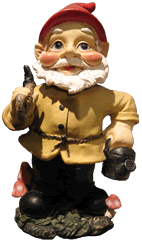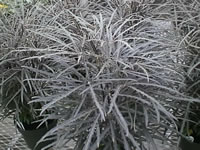How to Grow and Care for False Aralia Plants
Schefflera elegantissima - Dizygotheca elegantissima

False Aralias are small, tropical evergreen trees that are native to the islands of the South Pacific.
In their native environment, Schefflera elegantissima can grow up to 26 feet tall, but when grown in pots or planters they seldom reach more than 4-6 feet tall. They are single stemmed plants with palmate leaves that are divided into 4-9 dark, greenish-brown leaflets with deeply serrated edges. Schefflera veitchii is a similar species, but has coppery-green leaves with light red veins.
False Aralia plants seldom bloom in cultivation. They are fairly easy to grow as house plants in areas where they are not hardy.
Small plants are an excellent choice for growing in dish gardens and in terrariums.
Growing Requirements for False Aralia Plants
False Aralias are only hardy in USDA zones 11-12. In other areas, they are grown as house plants.
In the garden, Schefflera elegantissima should be grown in partial to full shade where they will be protected from the wind.They should be planted in slightly acidic, well drained but moisture retentive soil with a pH of 5.5 to 6.5. Water regularly to keep the soil evenly moist, but never soggy.
Feed False Aralia plants monthly, using a balanced, all purpose fertilizer.
Growing False Aralias as House Plants
- Indoors, False Aralia plants should be kept in an area with bright filtered light, but never in full sun.
- They should be grown in pots or planters with sufficient drainage holes, and be planted in a peat moss based, commercial potting mix.
- Water regularly while actively growing, keeping the soil slightly moist.
- Never allow the soil to remain soggy nor let it dry out completely. Never allow a False Aralia to sit in a saucer of water.
- False Aralias prefer a warm, fairly humid atmosphere, with daytime temperatures of 75°-85° and 70° nights.
- Temperatures below 60° will quickly cause the lower leaves to drop.
- Feed pot grown False Aralia plants every other month during the spring and summer, using a soluble fertilizer that has been formulated for house plants.
- Your plant will enjoy spending the summer months in a shaded area of your garden, but be sure to check for pests and problems before bringing them back indoors.
- During the dry winter months, you should mist the foliage daily or place the planter on a tray filled with moistened pebbles to increase humidity.
Pests and Problems of False Aralia Plants
The most common pests to infest False Aralias are Spider Mites, Aphids, Scale and Mealy Bugs.
False Aralia plants will shed their lower leaves for a variety of reasons.
Watering is critical. Too much or too little water will cause the leaves to shed.
The leaves will also fall off if the temperature drops below 60° or changes rapidly. Lack of humidity in the winter is another cause of leaf drop.
Propagating Schefflera elegantissima Plants
False Aralia plants can be propagated with softwood stem cuttings taken during the summer. Older plants are a little harder to start and should be propagated by air layering in the spring.
Schefflera seeds can be started indoors at any time, but for the best results sow fresh seeds in late summer.These seeds germinated faster with light, so do not cover them! Maintain a temperature in the growing medium of 70° until germination, which takes 20-30 days.
False Aralia - Schefflera elegantissima

